Holistic Education Garden

The holistic garden will bring together the foundational elements of holistic education - balance, inclusion, and connection - with environmental philosophies that identify the Earth as a living and complex system. The garden will encourage spirituality, mindfulness, and wellness of the head, heart, and hand through interactive sensory experiences that follow the rhythms of the natural world. Serving as metaphor – and site – of holistic learning, the garden reflects OISE's ongoing excellence in transformative teaching, learning, and research into ones that care for individuals, societies, and environments.
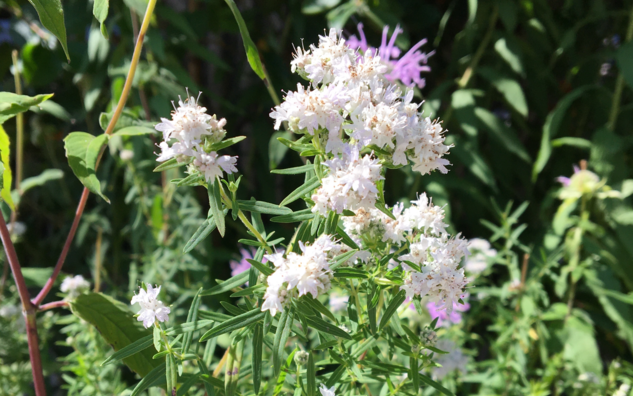
Virginia Mountain Mint - Pycnanthemum virginianum
This plant is native to Ontario and appeals to all of the senses, which represent the awareness and connection between mind and body essential do Holistic Education. Its flowers are small, white, and delicate, and highly aromatic. Mint leaves have been used medicinally in teas or poultices to treat headaches, indigestion, coughs, and fevers. Its leaves are also lovely in salads or eaten on their own. Virginia Mountain Mint also attracts a range of pollinators including the pearl crescent butterfly.
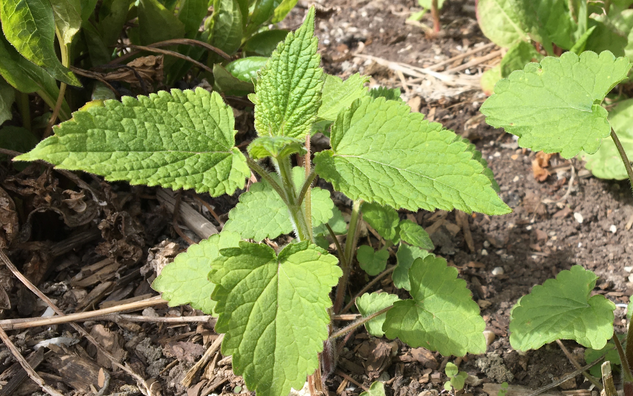
Lemon Balm - Melissa officinalis
While not a native species to Ontario, lemon balm is a plant that appeals to all of the senses. Its leaves are soft and hold a light lemony mint fragrance that attracts honey bees. Lemon balm’s leaves can be eaten as is or made into tea. It also has medicinal properties; it has been used as an antiviral and antibacterial and its leaves, when crushed, act as a natural mosquito repellent. In the Holistic Education garden, its a reminder of wellness.
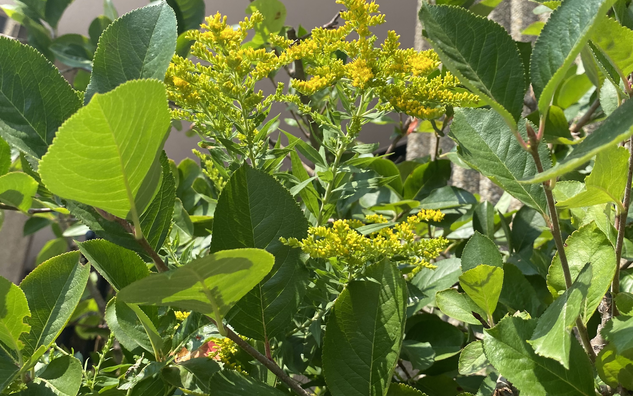
Canada Goldenrod - Solidago canadensis
Goldenrod is one of the most common wildflowers in Ontario and has long been valued for its medicinal properties. Goldenrod is often used to promote urinary and kidney health and can be found in many herbal teas. Historically goldenrod was used in poultices to treat burns and heal wounds. Goldenrod is high in antioxidants and supports cardiovascular health. Its small golden flowers appear late in the summer, and in this garden it represents the body and mind connection promoted by Holistic Education.
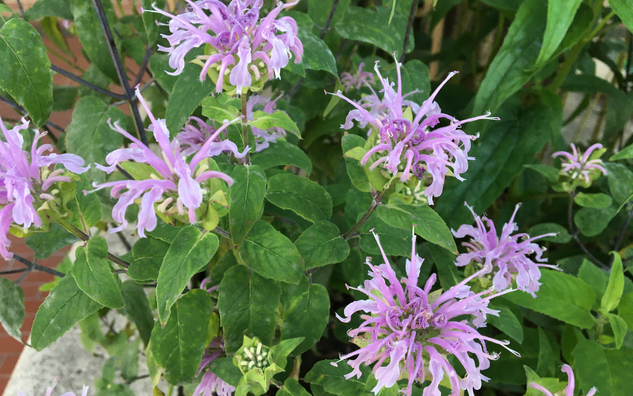
Wild Bergamot - weca' wûs wackwî' nek - Monarda fistulosa
Wild bergamot or bee balm is a fragrant native plant to Ontario that has clusters of soft pink or purple flowers. It has long been used by Indigenous peoples of North America as a medicine and antiseptic to treat colds (brewed as tea) and infections and wounds (ground into a poultice). Tea made from wild bergamot has also been used as a stimulant in tea. Attracting many pollinators to the garden, this plant represents the interconnectedness valued by Holistic Education.
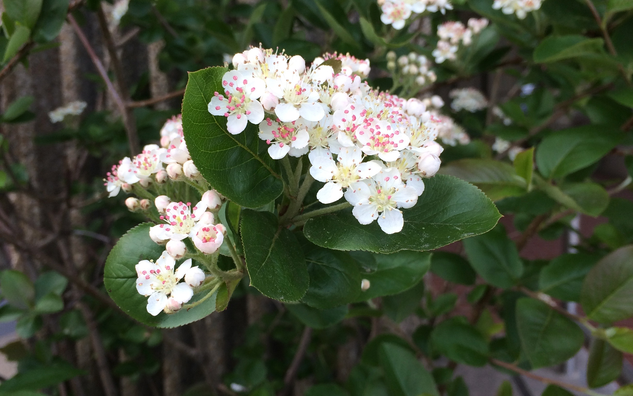
Black Chokeberry - Zaswemin - Aronia melanocarpa
Black chokeberry is a small shrub native to Ontario that is appealing to the senses. Its leaves change from green to bright red and orange in the autumn. Its berries are edible to humans and a range of pollinators and stay on the shrub into the winter season. Black chokeberry has therapeutic qualities: it protects and cares for the body by stimulating circulation, strengthening the heart, and may also be effective in fighting cancer and heart disease. Here, it is a reminder of the complexity of living systems, one of the pillars of Holistic Education.
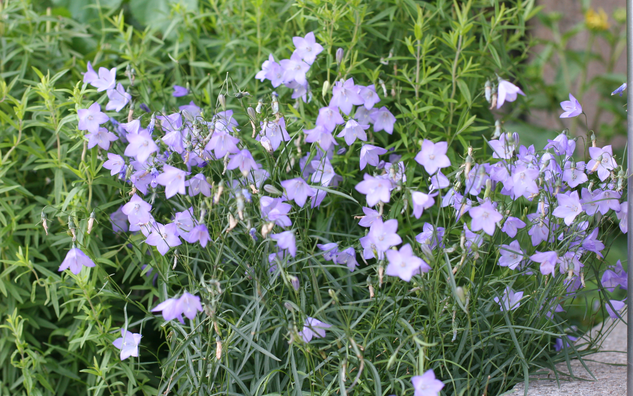
Bluebells - adota'gons - Campanula rotundifolia
Bluebells are common across the country, from the Yukon to Newfoundland. Its small bluish purple flowers are a welcome sight at the end of winter and are often the first bloom to signal the start of spring. An attractant of butterflies, bluebells are referred to by the Northwest Haida peoples as blue rain flowers; it is believed that picking them will bring rain. Bluebells are also called harebells, a name which stems from the folk belief that the flowers grew where hares lived and that witches squeezed juices from the flowers to turn themselves into hares. In the Holistic Education garden, it represents the importance of connecting mind, body and spirit.
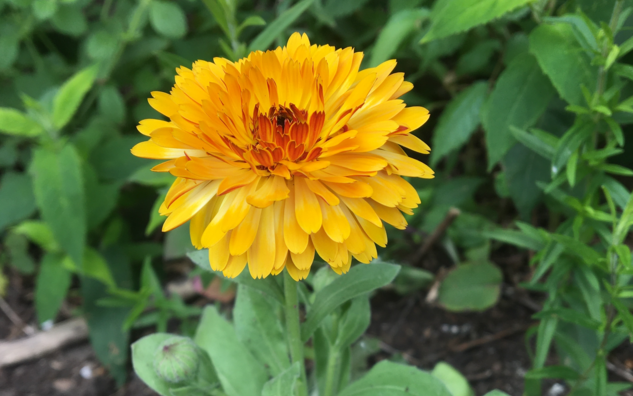
Calendula/ Marigold - Calendula officinalis
Calendula has a long history of cultivation and therefore its origin is unknown. Its medicinal uses are wide; it is a healing plant and it can be used in teas and salves. Calendula seeds are easily saved and shared. Another plant that reminds us of the mind-body-spirit interconnection, present in Holistic Education.
Garden Map
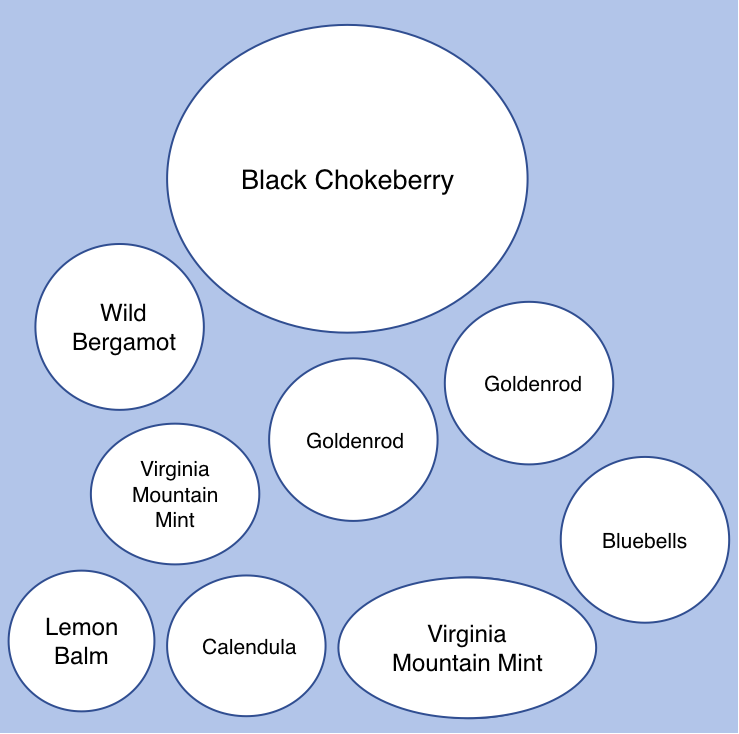
Resources on the Holistic Education Garden
Articles and Books:
Miller, J. P. (2007). The holistic curriculum (2nd ed.). University of Toronto Press.
Miller, J. P. (2010). Whole child education. University of Toronto Press.
Williams, D. R. (1993). The unity of learning and living for ecological sustainability: Gandhi’s educational philosophy in practice. Holistic Education Review, 6(3), 18-22.
Williams, D. R. (1995). Think ecologically, act locally: On becoming native to a place. Holistic Education Review, 8(2), 52-54.